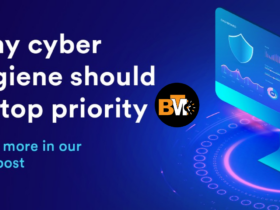Introduction to Mobile Banking App Development
In an era where digital solutions dominate, mobile banking apps have revolutionized financial services. They offer unparalleled convenience, enabling users to access banking services anytime, anywhere. However, the cornerstone of their success lies in building trust with users by ensuring security, reliability, and user-friendly features. This guide explores the essentials of developing a trustworthy mobile banking app development company and leveraging technology to instill user confidence.
Key Features of a Reliable Mobile Banking App
Developing a reliable mobile banking app requires integrating features that enhance usability and security. Below are the must-have features:
User Authentication and Security
- Two-factor authentication (2FA)
- Biometric login options (fingerprint or facial recognition)
- End-to-end encryption for secure data transmission
Real-Time Transaction Capabilities
- Instant money transfers
- Real-time notifications for transactions
- Bill payment integrations
Intuitive User Interface
- Simple navigation and responsive design
- Accessible for users with disabilities
- Personalized dashboards for a tailored experience
Pro Tip: Ensure the app caters to all demographics, making it inclusive and easy to use for non-tech-savvy individuals.
Understanding the Role of Technology in Building Trust
Trust is the linchpin of successful mobile banking apps. Modern technologies significantly contribute to establishing this trust:
How Encryption Secures Transactions
Encryption converts user data into unreadable formats, making it nearly impossible for hackers to access sensitive information. Implementing AES (Advanced Encryption Standard) and SSL certificates is crucial for safeguarding user data.
The Impact of Blockchain in Banking
Blockchain technology ensures transparent and tamper-proof financial transactions. By eliminating intermediaries, it minimizes fraud and enhances trust in the app’s reliability.
| Technology | Role in Banking Apps |
| Encryption | Protects data privacy |
| Blockchain | Ensures transparency |
| AI | Enhances user support |
Steps to Develop a Mobile Banking App
Creating a robust mobile banking app involves several critical steps:
1. Research and Requirement Gathering
- Identify target audience needs.
- Analyze competitors’ apps for insights.
- Gather technical and compliance requirements.
2. Design and Prototyping
- Create wireframes for the app layout.
- Develop prototypes to test user flows.
- Incorporate feedback to refine designs.
3. Development and Testing
- Use agile development methodologies for efficiency.
- Conduct rigorous testing to identify bugs.
- Ensure compatibility across various devices and operating systems.
Note: Beta testing with a focus group helps uncover usability issues before the public release.
Ensuring Security in Mobile Banking Apps
Security is the backbone of trust in mobile banking apps. Here are critical measures:
Two-Factor Authentication (2FA)
2FA adds an extra layer of security by requiring users to verify their identity through a second method, such as an OTP (one-time password).
Regular Security Audits
Periodic audits identify vulnerabilities and ensure the app remains compliant with evolving security standards.
Protecting Against Cyber Threats
Implement measures like:
- Firewalls to block unauthorized access.
- Anti-phishing tools to prevent fraudulent activities.
- Regular updates to patch security gaps.
Enhancing User Experience through Design
User experience (UX) is a significant factor in app success. A seamless design fosters user trust and satisfaction.
Mobile-Friendly Interfaces
- Optimize for different screen sizes.
- Ensure fast loading times.
Personalization and Accessibility Features
- Offer personalized recommendations based on user behavior.
- Include accessibility options such as voice commands or high-contrast themes.
Did You Know? Apps with excellent UX see 23% higher user retention compared to poorly designed apps.
Technological Trends in Mobile Banking
Keeping up with technological advancements ensures your app remains competitive and trustworthy:
Artificial Intelligence and Chatbots
AI-powered chatbots provide 24/7 customer support, reducing response times and improving user satisfaction.
The Rise of Biometric Authentication
Biometric methods, such as fingerprint and facial recognition, offer a secure and convenient login experience, eliminating the need for complex passwords.
Regulatory and Compliance Considerations
Adherence to financial regulations is non-negotiable in banking app development.
Meeting Financial Industry Standards
Ensure compliance with standards like PCI DSS (Payment Card Industry Data Security Standard) and ISO 27001 to secure user data and financial transactions.
Data Privacy and GDPR Compliance
- Inform users about data collection practices.
- Provide options to opt-out of unnecessary data sharing.
Cost and Timeline of Mobile Banking App Development
Budget Estimations
| Feature Category | Estimated Cost Range ($) |
| Basic App Features | 50,000 – 100,000 |
| Advanced Security Measures | 20,000 – 50,000 |
| AI and Blockchain Features | 30,000 – 70,000 |
Factors Affecting Development Costs
- Complexity of features
- Number of platforms (iOS, Android, or both)
- Developer expertise and region
Timeline
Typically, a mobile banking app takes 6-12 months to develop, depending on its complexity and scale.
Conclusion: Building a Secure Future with Mobile Banking Apps
Mobile banking apps are transforming the financial sector, offering convenience, security, and trust. By focusing on robust technology, user-centric design, and stringent security measures, developers can create apps that stand out. As technology evolves, staying updated with trends like AI, blockchain, and biometric authentication will ensure long-term success.
Trust is not just a feature; it is the foundation of mobile banking. Invest in building trust with technology, and your app will not only gain users but also retain them for years to come.







Leave a Reply